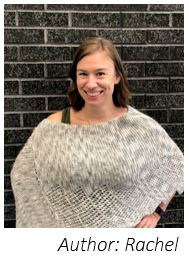Rethinking Trustworthiness in Qualitative Research
Qualitative research is an iterative process. However, the methods that we use to establish trustworthiness are often separated from the research process itself, leading to post-hoc evaluations of trustworthiness. Instead, these methods should be built into this iterative research process along with other design aspects like instrumentation, methods of data collection, and analysis. The good thing is that this is easy to plan and do, as it simply involves the already active, dynamic relationship that you have with your research.
One way to ensure trustworthiness of a study is by continually reviewing your research methods against your research questions. As you are move through data collection, are your methods yielding the information that you need to address your research questions? Will these provide you the data you need for your analysis? If you are conducting interviews, reviewing the data after each interview would be appropriate.
Another way to establish trustworthiness as you are collecting data is to ensure a sufficient sample size. You may already have a target sample size; however, it is helpful to remember that for many studies (though not all) ensuring saturation of the data is important. Again, reviewing collected data after each interview can help you determine if you have reached saturation or if you need to keep collecting data.
It also may be appropriate to conduct some analysis of the data while in your data collection phase. This strategy often is associated with grounded theory studies. However, analyzing data as they come in not only helps with ensuring adequate sample size and saturation, but provides a continued check that the method is appropriate for the research question, that the method is appropriate for the analysis, and that all of this is congruent with your research questions.
Remember, your research questions drive your method and analysis, and these can be flexible. Qualitative research is a dynamic process with a lot of back and forth and a lot of reviewing, thinking, reflecting, and tinkering. And this is okay! Recognizing this and working with it, rather than forcing your study into a box based on your proposal (especially if things are not working as initially planned) will lend itself to a solid study that has trustworthiness built in.

We work with graduate students every day and know what it takes to get your research approved.
- Address committee feedback
- Roadmap to completion
- Understand your needs and timeframe
